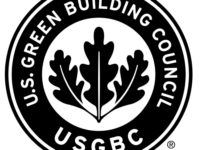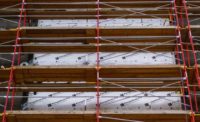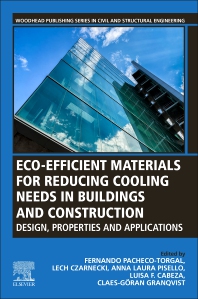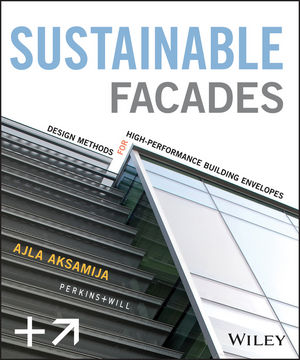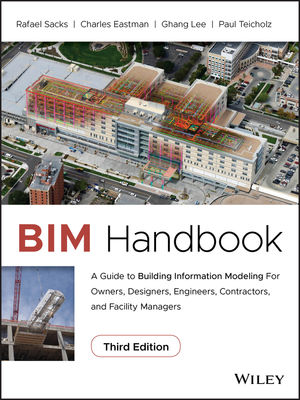A three-ring binder dated April 1999 and filled with about 200 photocopied pages was the reference guide for LEED v1.0—the pilot version of LEED sent to USGBC members from its headquarters, which was then located in San Francisco. Comments were requested during the pilot period, which ran to December 1999.
The rating has come a long way since LEED v1.0, which had credit categories paired with verbs to get the point across, like “Safeguarding Water” and “Planning Sustainable Sites,” but the DNA of today’s LEED is clearly present in that original version.
LEED for New Construction (LEED-NC) is “based on existing, proven technology and evaluates environmental performance from a ‘whole building’ perspective.” Even after five years of development (a simple “pass/fail” draft of the rating system was completed in 1994), numerous credits under consideration had been dropped from v1.0, “due mainly to difficulties in quantification.” Even so, v1.0 managed to include 45 credits and prerequisites with specific requirements.
LEED evolved steadily from that point as adoption of the rating system exploded, maintaining and sharpening its focus on proven strategies, whole-building performance and metrics. The first 12 buildings were LEED certified in March 2000, and USGBC members approved LEED 2.0 in May 2000, in the first of several cycles of improvement. (Version 2.2 came out in 2005 as the next major revision, and LEED v2009 in April 2009.)
Beyond New Construction

|
|
California Department of Public Health—Building P is located in Richmond, Calif. More information on the LEED for Existing Buildings Silver-certified project can be found at: http://bit.ly/13mPaWs Image by Tim Griffith |
Meanwhile, USGBC was eyeing the existing building stock.LEED-EB (now LEED for Existing Buildings: Operations & Maintenance, or LEED-EBOM) was being talked about no later than 2000, and 65 projects were part of a LEED-EB pilot by 2002. As Environmental Building News wrote at the time:
“As it relies on actual utility bills and other documentation of energy and resource flows through the building, LEED-EB is potentially even more meaningful than the original LEED as an indicator of the actual environmental impact of buildings in use. In addition, the large number of existing buildings means that the potential market for LEED-EB is substantially larger than that for the original LEED program.”
USGBC launched a formal draft of LEED-EB in March 2004, and the rating system was live in November 2004, with the first certified project (the Getty Center in Los Angeles), arriving in February 2005. LEED-EB got its first major update in 2008, and then a minor update arrived with LEED v2009.
With these major pieces in place, and the LEED rating systems gaining market traction, USGBC worked to strengthen the tie between new buildings and the Existing Buildings program, and between all LEED buildings and verified performance.
At its Greenbuild conference in December 2006, USGBC made several announcements that set the tone for years to come. After an analysis of 420 buildings certified under LEED-NC prior to 2006 showed that 17 percent earned fewer than two points for overall energy efficiency, USGBC announced that all projects would have to earn at least two points. This essentially increased the stringency required by the prerequisite to 14 percent energy savings in new buildings compared to an ASHRAE 90.1-2004 baseline—a baseline that typically is ahead of local codes by several years.
To accelerate adoption of LEED-EB, USGBC also opened free LEED-EB registration to certified LEED-NC buildings, lighting a path from green construction to green operations and ongoing tracking. While 33 projects were registered under LEED-EB prior to that announcement, according to the Green Building Information Gateway (GBIG), 207 were registered in the following year and 547 in the year after that. By the launch of LEED v2009, 194 LEED-EB projects had moved beyond registration and become certified. As of December 2012, 1,660 are certified.
Reporting Data
In 2008, USGBC-supported research found that LEED buildings on average provide 25 percent energy savings, although any individual building might or might not perform up to expectations. To gain more insight into this situation USGBC introduced a Minimum Program Requirement with the launch of LEED 2009 for all LEED buildings to report their energy and water usage data to USGBC for five years after certification. The announcement was met with a mix of kudos and trepidation—the latter due to concerns about confidentiality, and possibly revoking of certification. USGBC clarified that certifications would only be revoked if projects didn’t report data, not if the data didn’t meet expectations.

|
|
The LEED for Existing Buildings Gold-certified Westory Building recertification project is located in Washington, D.C. More information can be found at: http://bit.ly/UbWwXQ Image by Eric Burka |
While many LEED-certified buildings sharing their data meet or perform beyond expectations, data from some buildings reveal problems—in some cases, problems owners aren’t aware of until USGBC alerts them and provides expertise in identifying issues.
With LEED v4, which USGBC plans to launch in 2013, those reporting requirements have become prerequisites and credits within the rating systems, with added granularity to provide more actionable data. An Advanced Energy Metering credit in LEED-BD+C, for example, would not only require hourly logging of data and remote access but also submetering of large energy-consuming systems. In a similar LEED-EBOM credit, an alarm system would also have to be in place to alert operators when demand rises more than 5 percent above expected levels.
Since LEED’s reporting requirement took effect, transparency has been come a catchword across the building industry. Laws passed in cities such as New York, Washington, and San Francisco are not only requiring reporting of energy data but also publishing it for all to see in some cases.
While USGBC doesn’t publicize energy data of LEED projects without the owner’s consent, its new GBIG tool has opened up access to a wealth of information on publicly listed LEED and non-LEED buildings, including ENERGY STAR-labeled buildings. As has been the basis of LEED all along, with plaques and certification levels demonstrating adoption of environmental strategies, USGBC hopes that public displays of performance—now with more granularity than ever through GBIG’s display of credits achieved and more—will spur more buildings to perform to higher standards.
Looking at LEED v4 and beyond, USGBC continues to explore new ways to incentivize ongoing reporting and analysis of performance. A new, dynamic LEED plaque is envisioned that would continually update performance results and encourage ongoing engagement with LEED. We can also look forward to analyses of aggregated building data that will continue to point the way toward refinements to how our building stock is managed, and toward continuous improvement of LEED.




